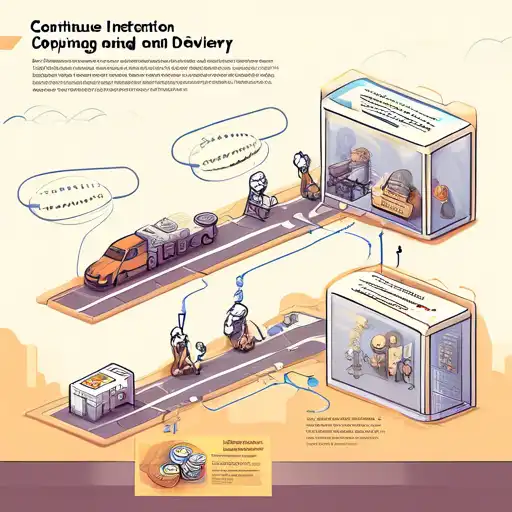What is Continuous Integration and Delivery?
Continuous Integration (CI) and Continuous Delivery (CD) are pivotal practices in modern software development, aimed at improving the speed and quality of software releases. CI/CD automates the integration of code changes from multiple contributors into a single software project, ensuring that the software can be reliably released at any time.
The Core Principles of CI/CD
At the heart of CI/CD are several core principles designed to streamline development processes. These include frequent code integration, automated testing, and the ability to deploy updates swiftly and safely. By adhering to these principles, teams can reduce integration problems and deliver updates to users more efficiently.
Benefits of Implementing CI/CD
Implementing CI/CD offers numerous benefits, such as:
- Reduced manual errors through automation
- Faster release cycles
- Improved product quality
- Enhanced team collaboration
These advantages make CI/CD an essential strategy for teams aiming to adopt Agile and DevOps practices.
How CI/CD Works
CI/CD pipelines automate the steps in software delivery, from code commit to production deployment. The process typically involves:
- Developers commit code changes to a shared repository.
- The CI server automatically builds the application and runs tests.
- If tests pass, the CD system deploys the changes to production or staging environments.
This automation ensures that software updates are delivered quickly and reliably, with minimal human intervention.
Best Practices for CI/CD
To maximize the effectiveness of CI/CD, teams should follow best practices such as:
- Maintaining a single source repository
- Automating the build and test processes
- Deploying to production frequently
- Monitoring and feedback loops
Adhering to these practices helps teams achieve continuous improvement and deliver high-quality software consistently.
Challenges in CI/CD Adoption
While CI/CD offers significant benefits, teams may face challenges during adoption, including cultural resistance, toolchain complexity, and the need for skilled personnel. Overcoming these challenges requires commitment, training, and the right set of tools.
Conclusion
Continuous Integration and Delivery are transformative practices that enable teams to deliver software more efficiently and reliably. By automating the integration and delivery processes, teams can focus on innovation and quality, ensuring that they meet the demands of today's fast-paced software development landscape.
For more insights into DevOps practices, check out our guide on essential DevOps tools.
